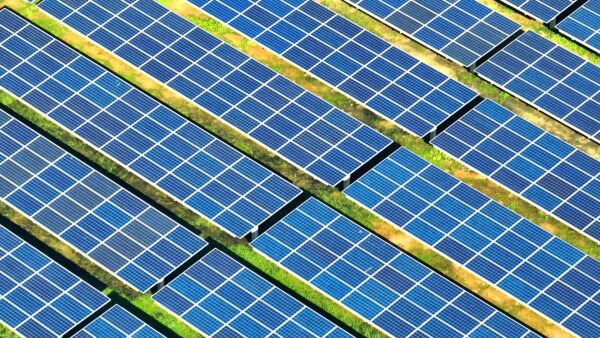Copyright thediplomat

East Asia is a powerhouse in the global renewables sector. Importantly, this is not only due to China’s sizable market share when it comes to command over critical minerals supply chains and the production of solar panels, wind turbines and batteries, as is often referenced in discussions about the industry. In fact, Japan, South Korea, Indonesia, Malaysia and the Philippines are all part of a booming renewables ecosystem as innovators, renewables technology exporters, sources of raw materials, or destination markets for the development of clean energy hubs. Global renewable energy production is expected to double by 2030, creating extremely lucrative business opportunities for the companies that manage to carve out a share of the market. Energy production and energy storage are both crucial components of the energy transition from fossil fuels to renewables. This is why the stationary battery market is becoming increasingly prominent, with current figures estimating that it already commands a nearly 60 percent share of the global battery market as a whole. Stationary batteries and particularly cost-effective and long-life lithium-ion batteries are already worth a whopping 661 billion USD globally, and the compounded annual growth rate (CAGR) of the market is forecast at 21 percent. East Asia is experiencing rapid growth in this field, and is expected to drive the transition to renewables resources even further. There is fierce competition between East Asian economies, with each looking to increase their uniqueness and specialization in a globally expanding market. China not only has the largest installed renewables capacity in the world, but also leads in the manufacturing of solar panels and wind turbines. South Korea has a large and growing solar panel market and manufacturing sector, while Japan had the third-largest installed solar capacity in the region until it was recently overtaken by India. Indonesia, Thailand and Malaysia are also leaders in the manufacturing of photovoltaic (PV) panels, while Malaysia is on track to become the home to the largest floating solar power production in the world. Meanwhile, the so-called “battery triangle,” made up of China, Japan, and South Korea, continues to charge ahead in both the electronic vehicle (EV) and stationary battery markets. One of the primary challenges of the energy transition, however, as both Southeast Asian and European countries can attest, is keeping up with the pace of production. Energy grids are often struggling to integrate the variety of wind and solar power that has become available to them. This is an area in which ASEAN can mobilize instrumental investment to unlock markets successfully. Cooperation, alongside bi- and multilateral frameworks, could serve as the basis of a true energy revolution in Asia, as a number of recently published reports highlight. However, access to such booming markets, both in Asia and globally speaking, and especially in an industry that requires significant investments in building up to economies of scale, often involves the rise and similarly rapid fall of companies. The proliferation of battery and other renewables technology firms is no guarantee of sustainability, just as profitability today does not promise innovation tomorrow. This is something that European companies are currently grappling with, with the EU witnessing decreasing levels of investment in its renewables industry, particularly in solar panel producing firms. Northvolt is an example of an initially high-value company, founded in 2017 and raising over $13 billion, only to file for bankruptcy earlier this year. Northvolt never reached the 90 percent production yield that would have been necessary to make its rise economically viable in the long term. Kore Power and Freyr Battery are battery startups founded in 2018 in the U.S. and Norway respectively, which both announced ambitious plans to build large-scale production factories that they later abandoned. Scale appears to be the most important bottleneck on the development path of these Western companies. Experts in the industry have for long warned that new battery business endeavors simply cannot compete with the experience that China, and Asian companies more broadly, have in giga-scale production. This is not to suggest that Asian companies and startups are altogether free from development risks. Xiamen Hithium Energy Storage represented one of the leading firms in the global battery market, having become a prominent firm within China as well as on the global stage by striking partnership as far as the United States. Hithium’s relatively quick rise – after it was founded in 2019 – was also evidenced by the company’s planned IPO on the Hong Kong Stock Exchange (HKEX). HKEX not only enables companies to access funding directly, but also opens up opportunities for attracting capital and investment from overseas sources. Hithium’s balance sheet, indeed, for multiple years now, has given rise to concerns about the longevity of the company in the eyes of investors. Despite the generally positive coverage of the innovation and business prowess of the company, year after year Hithium relied on substantial subsidies from the Chinese government to bring its accounts in the black. This, however, eventually caught up with investors who today question its solvency, particularly following multiple recent losses by Hithium in its applications for tenders for the development of energy infrastructure projects in China’s Xinjiang province. In relation to the planned IPO, this was recently shot down by regulators, striking another blow to the company’s future prospects. Whether on the Hong Kong Stock Exchange or via bilateral agreements between Asian countries, competitiveness remains one of the primary concerns of leaders in the renewables field. Sustainability – not merely in the context of the energy transition but also in corporate business practices and models for economic growth – is perhaps the most important quality a company can strive for. In a rapidly expanding Asia and global renewable energy market, solar, wind and battery producers will all have to contend with the challenges that come with this requirement.



